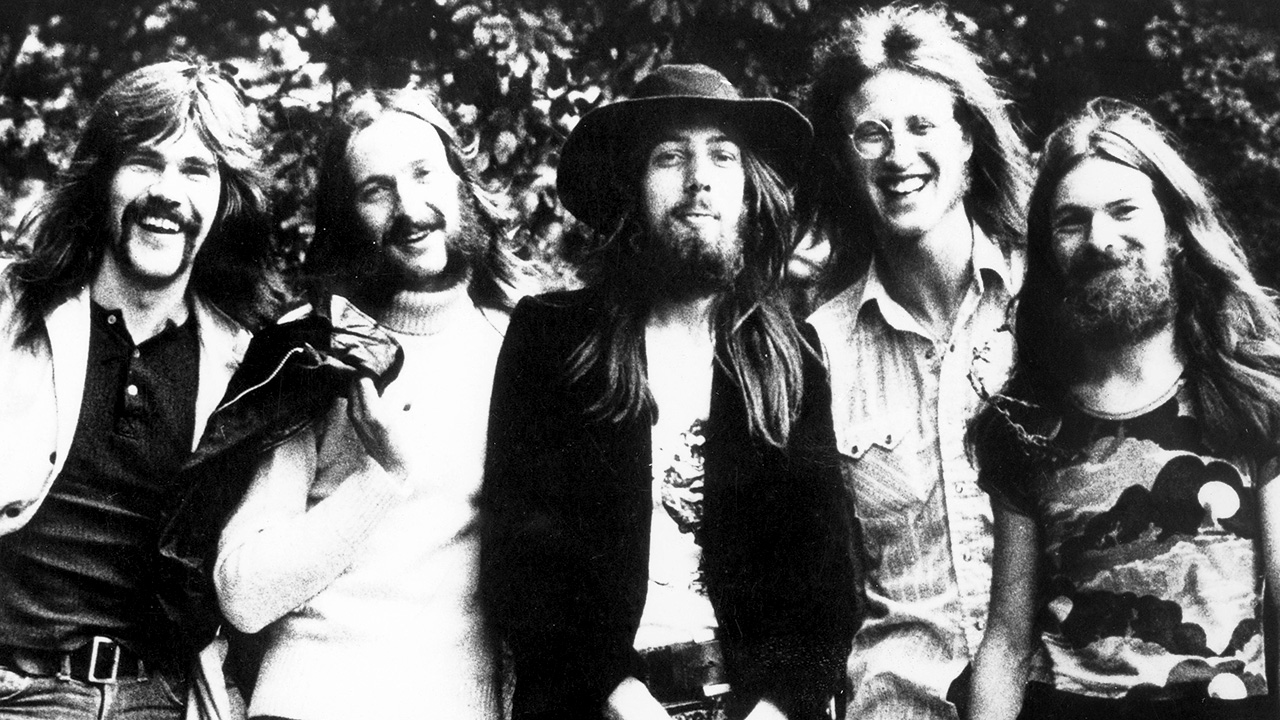“I said, ‘What’s this – “Run For Home?’ He said, ‘Oh, that’s just shite’”: Lindisfarne’s biggest-selling hit, like so many, was a happy accident
If Back And Fourth producer Gus Dudgeon had arrived early, Ray Laidlaw wouldn’t have been looking through Alan Hull’s lyric book beside a piano

Lindisfarne had been in the Top 10 before, but their 1978 return was a defiance of punk rock and a validation of their fans and the original line-up reunion
Folk-proggers Lindisfarne achieved two Top 10 hits in 1972, reaching No.5 with Meet Me On The Corner and later No.3 with Lady Eleanor. The associated album, Fog On The Tyne, was one of the year’s biggest-selling LPs, spending 56 weeks in the chart.
But a few years later it looked like those experiences were all in the past. With the lukewarm reception to follow-up LP Dingly Dell, and tensions arising on tour, the original line-up fell into factions.
Then, after a one-off 1976 reunion show led to more, Alan Hull, Ray Jackson, Simone Cowe, Rod Clements and Ray Laidlaw decided to make another go of it, resulting in the album Back And Fourth two years later – and spawning the classic track Run For Home, which took them back to No.10 in June 1978.
“It sold a lot of copies over a long period of time,” drummer Laidlaw told Prog in 2009. “So while we had other singles which charted higher, none sold better.”
Like so many other hit singles, this one came about in a happy accident at Rockfield Studios in Wales. “We were waiting for Gus Dudgeon to come down; he was gonna produce the album,” Laidlaw recalled. “Alan was sitting at the piano, and I was going through an old notebook in which he had a load of unused lyrics. I came across this song called Run For Home, and said to him, ‘What’s this?’ He replied, ‘Oh, that’s just shite.’”
Laidlaw pressed Hull to play the song. “As soon as we got to the chorus, it was obvious it was good,” the drummer said. “When the chorus came around for the second time, myself and a couple of the other guys in the studio joined in with harmonies. At exactly that point, Gus walked in and said, ‘That’s the single!’”
Sign up below to get the latest from Prog, plus exclusive special offers, direct to your inbox!
It wasn’t an instant hit – in fact, with the prevailing wind being more from the punk and early new-wave direction, the BBC blanked it. The song might never have entered the charts at all; but as it became a fan favourite on the road, it became impossible to ignore.
Perhaps the concert stage, rather than the studio, was Lindisfarne’s natural environment
As complete validation, the band wound up performing (well, miming) their ballad of a homesick musician who’s tired of touring on Top Of The Pops in July 1978, during an episode that also happened to feature Renaissance. It also became their a Top 40 hit in the United States.
In 2012, reviewing the reissue of Back And Fourth, Prog noted: “From this kind of distance it’s easy to forget just what a hugely popular force Lindisfarne’s homely blues-tinged folk rock was.
“Dudgeon’s lavish production coats everything in a glossy veneer, but too many of the tunes seem content to merely trundle along. This isn’t a bad album as such, but nor is it the triumphant return it should have been. Perhaps the concert stage, rather than the studio, was Lindisfarne’s natural environment.”
Lindisfarne would return to hit world one more time in 1990, reaching No.2 with their novelty hit version of Fog On The Tyne, featuring football hero Paul ‘Gazza’ Gascoigne. But perhaps Run For Home should be the chart success they’re better remembered for.
Reflecting on the fact that they’d never taken pop success seriously – and had never been made to feel like pop stars anyway – Laidlaw observed of the song: “Shame we never followed it up.”
Not only is one-time online news editor Martin an established rock journalist and drummer, but he’s also penned several books on music history, including SAHB Story: The Tale of the Sensational Alex Harvey Band, a band he once managed, and the best-selling Apollo Memories about the history of the legendary and infamous Glasgow Apollo. Martin has written for Classic Rock and Prog and at one time had written more articles for Louder than anyone else (we think he's second now). He’s appeared on TV and when not delving intro all things music, can be found travelling along the UK’s vast canal network.
